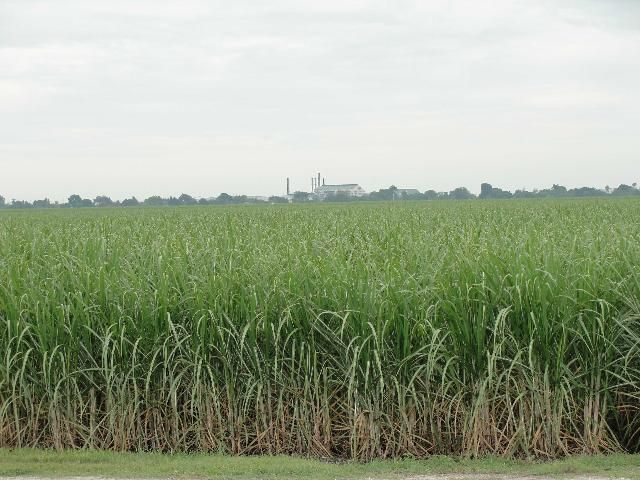Understanding the Manufacturing of Sugarcane Product for Buyers
The Journey of Sugarcane: From Harvest to Everyday Products
The trip of sugarcane is a complex procedure that begins with meticulous farming and culminates in a variety of items that permeate our everyday lives. As we discover the various facets of sugarcane's journey, its role in sustainability and the more comprehensive effects for our setting come into sharper focus.
Cultivation of Sugarcane
The growing of sugarcane is a critical farming process that calls for certain environmental problems and administration practices. Optimal growth takes place in subtropical and tropical regions where temperature levels range in between 20 ° C and 32 ° C. Adequate rainfall or watering is crucial, as sugarcane prospers in moist dirt with well-drained conditions (sugarcane product). Soil top quality significantly influences yield; therefore, farmers often conduct soil tests to figure out nutrient needs
This method assists in reliable collecting and takes full advantage of sunlight exposure. Crop rotation and intercropping are recommended techniques to boost soil fertility and decrease pest invasions.
Prompt application of these plant foods can dramatically improve sugar yields. Generally, effective sugarcane farming hinges on a combination of environmental stewardship, calculated preparation, and continuous monitoring practices.
Gathering Strategies
Successful sugarcane cultivation finishes in the gathering stage, which is essential for making best use of return and guaranteeing high quality. The timing of the harvest is essential; sugarcane is commonly collected when sucrose degrees peak, generally between 10 to 18 months after growing. This period varies based upon climate, dirt kind, and sugarcane variety.
Harvesting methods can be extensively categorized right into manual and mechanical methods. Hand-operated harvesting is labor-intensive, depending on proficient employees who use machetes to reduce the stalks close to the ground. This method permits discerning harvesting, where just the ripest walking canes are chosen, therefore boosting overall sugar web content.
Alternatively, mechanical harvesting has actually obtained appeal because of its performance and cost-effectiveness. Specialized farmers geared up with cutting knives and conveyor systems can process huge areas rapidly, considerably lowering labor prices. This method may lead to the inclusion of immature canes and a potential decline in sugar top quality.

No matter the method employed, ensuring that gathered canes are moved swiftly to refining centers is important. Prompt taking care of reduces spoilage and maintains the stability of the sugarcane, establishing the stage for optimum processing.
Handling Approaches
Handling sugarcane entails numerous vital actions that transform the gathered stalks into useful products, mainly sugar and molasses. The initial phase is washing the walking cane to eliminate soil and particles, followed by the removal of juice with crushing or milling. This process typically employs heavy rollers that damage the walking stick fibers to launch the wonderful fluid included within.
When the juice is extracted, it goes through clarification, where contaminations such as soil particles and bagasse are eliminated. This is typically accomplished by adding lime and heating up the juice, enabling sedimentation. The cleared up juice is then concentrated via evaporation, where water material is minimized, causing a thick syrup.

Ultimately, the processing of sugarcane not just creates sugar and molasses but additionally prepares for different derivatives, which will certainly be explored in succeeding conversations.
Products Derived From Sugarcane
Sugarcane is a flexible plant that produces a broad selection of products beyond just sugar and molasses. Amongst the key by-products are ethanol and biofuels, which have obtained prominence as renewable resource sources. Ethanol, created via the fermentation of sugarcane juice, offers as an alternate to nonrenewable fuel sources and is usually mixed with gas to develop cleaner-burning gas, decreasing greenhouse gas discharges.
Additionally, sugarcane is a considerable source of bagasse, the fibrous deposit staying after juice extraction. Bagasse is utilized in numerous applications, consisting of the manufacturing of paper, naturally degradable packaging, and as a biomass gas for power generation. Its usage not only lowers waste but also improves the sustainability of sugarcane handling.
In addition, sugarcane-derived items reach the food industry, where it works as an all-natural flavoring representative and sweetener in different cooking applications. In the realm of cosmetics, sugarcane essences are included right into skincare items because of their natural exfoliating residential properties.
Environmental Effect and Sustainability
The cultivation and handling of sugarcane have significant ramifications for environmental sustainability. This plant requires considerable water sources, typically leading to exhaustion of local water supplies and impacting surrounding ecosystems. In addition, using fertilizers and pesticides in sugarcane farming can cause dirt destruction and waterway pollution, posing risks to biodiversity.

Sustainable sugarcane farming likewise promotes soil health with crop turning and lowered husbandry, improving carbon sequestration. The adoption of these practices not just supports ecological stability however additionally improves the resilience of farming communities versus climate modification.
Conclusion
In recap, the trip of sugarcane encompasses numerous phases from growing to handling, eventually resulting in a broad variety of products. The significance of sugarcane expands past plain sweeteners, contributing to renewable resource via ethanol manufacturing, lasting packaging via bagasse, and all-natural removes for cosmetics. This complex plant plays an important duty in both nutritional enrichment and environmental sustainability, highlighting its relevance in modern farming and industrial methods.
Effective sugarcane farming finishes in the harvesting stage, which is pivotal for maximizing yield and making sure quality. The timing of the harvest is critical; sugarcane is typically gathered when sucrose degrees optimal, usually between Full Article 10 to 18 months after planting.Processing sugarcane entails a number of crucial steps that change the gathered stalks into functional items, primarily sugar and molasses.Sugarcane is a versatile crop that produces a wide selection of products beyond simply sugar and molasses. Home Page Furthermore, the usage of plant foods and chemicals in sugarcane farming can result in dirt destruction and waterway pollution, positioning threats to biodiversity.